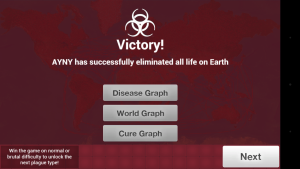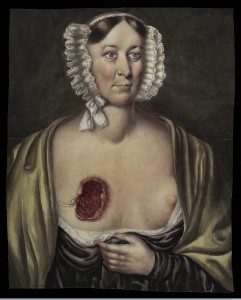On the first try, I named my bacteria EMNY and started it off in China. The disease spread almost instantly. I kept my eye on the world news, such as a kissing festival. When that festival occurred, I would upgrade my bacteria that can spread through blood contact. I spread the bacteria mostly from upgrading the Water Transmission and Air Transmission. When the news said the ships were going to increase its resistance to bacteria, I would upgrade the Water Transmission further. My first death took a while because I did not upgrade its symptoms very much until the bacteria was spread to a few billion people. However, my first bacteria failed because I upgraded the symptoms too soon and I did not manage to infect every single person. Therefore, the bacteria died with the last person infected, and the few that were not infected with the bacteria lived.
On my second try, I named my bacteria AYNY and started it off in India. I repeated the steps from the first game except I did not upgrade any of the symptoms until I got a notification that every single living being was infected with my bacteria. When that happened, I upgraded all my symptoms to high lethality and I easily wiped out humanity in just mere minutes.
In both games, none of the countries found a cure past 30%. On the second try, the bacteria spread a lot quicker because I focused on upgrading the Transmission chart over anything else in the beginning. The game helped me understand how simply easily and quickly a deadly bacterium can spread due to so many factors, such as air, water, animal, and blood transmission.





